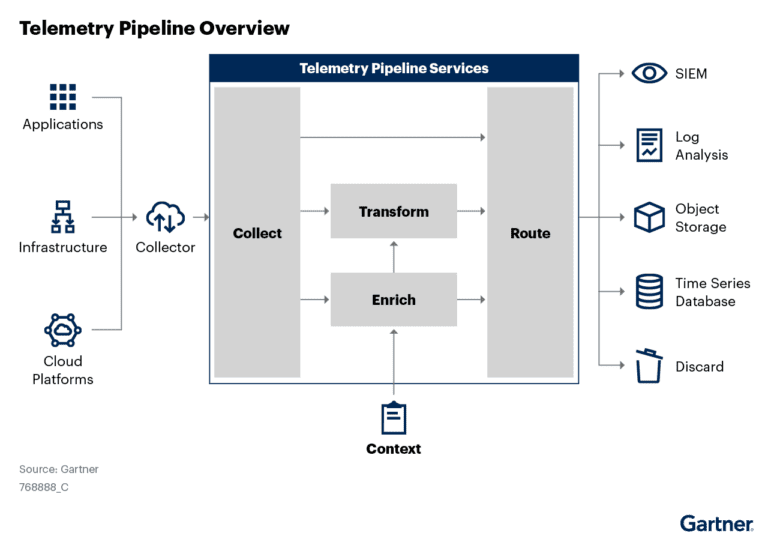How Does Service-Level Assurance Safeguard IT?
With the increasing reliance on workers who require remote access to the enterprise resources they need, companies have added additional authentication and authorization mechanisms to verify who these workers are and ensure they have the correct permissions.
Supporting newly remote workers puts an additional strain on the Information Technology (IT) team, who must create and maintain VPNs, multifactor authentication services, and other security systems. Both IT and remote workers depend on these mechanisms to secure their access to their applications and the servers and infrastructures that distribute them.
Even with additional funding for increased security infrastructure, there may not be additional funding for proper business process monitoring.
The monitoring process for businesses protects outbound services that companies provide and ensures that inbound services from other third-party vendors meet established SLAs (service-level agreements). Overall, service-level assurance depends on established monitoring and alerts that guarantee promised levels of business services.
Mission-Critical Transaction Flows

When monitoring didn’t need to consider security, transaction paths were straightforward. Without security considerations, monitoring assumed that the user’s secure desktop was already authenticated and fully authorized. These permissions were enough for a script to automatically traverse the full path of application front-end request to the database backend, without. needing to account for each authentication boundary.Given this assumption, a script merely had to start the request, and IT’s back-end infrastructure made the needed connections to the components. The script just had to wait for the results. Monitoring teams that wanted to implement process monitoring were advised to establish monitoring-only test accounts stripped of all security constraints or with static security settings that could be easily scripted.

Then, when the stages of each process got separated and potentially served by third parties, where each required their own security procedures, additional authentication and authorization layers of protection were added to each part of the transaction. Examples listed in the above example are:
- User to Application: A smart card now authenticates the user to the application between the user and the application layer.
- Application to Database: Another login by the application to the cloud repository to authorize the application to fetch a data record.
- Database to Data Lake: The database stored in this private cloud had to pull raw data from a data lake to create its records. But the database also needed some multifactor authentication to the cloud-based data lake to make the pull request.
While a user can adjust to these new security requirements, these security gates can become problematic for a monitoring script that has to navigate through these new doors automatically. Scripts that were simple (and therefore robust) became more fragile as additional conditions for success were expected of them and transaction steps increased.
For ease of checking their business processes, the monitoring team might decide to circumvent these security mechanisms. If that is decided, these security side-steps will introduce IT vulnerabilities and open your company to exploitation by bad actors.
Here are the three main ways organizations open themselves up to security breaches:
Blind spots:
- A deliberate decision not to monitor a section of the mission-critical transaction flow is too hard to do.
Bypass:
- An extension of the blind spot challenges is where the entire transaction is deemed too difficult to monitor and will be left out of monitoring altogether.
Backdoors:
- This is the most dangerous of the three vulnerabilities because the business has decided to build a known vulnerability (backdoor) into the authentication mechanism and then exploit it via the monitoring mechanism to make it easier to monitor.
- Any bad actor scanning for these backdoors by learning from a periodic script can piggyback on this backdoor and get into your application or database to steal, corrupt, encrypt, or silently use that data.
Monitoring Complex Authenticated Business Transactions
Simply put, the service-level assurance platform’s monitoring solutions must be extensible and scalable to remain compliant with all authentication requirements. Comprehensive testing with all authentications in place, with actual test data, will provide the most accurate understanding of not only the actual transaction but the security mechanisms put in place to protect it along that transaction journey.
Apica monitoring checks provide out-of-the-box solutions and integration with third-party authentication and authorization services for your critical business process monitoring needs. These checks can be deployed internally for highly secure and sensitive business processes or can be hybridized to keep only authorized processes public, with the rest private and 100% internal.
Apica’s Professional Services can build customized script integrations with various authentication systems for more complex business monitoring, including multifactor authentication or third-party access providers.
Apica provides service-level assurance on any critical transaction regardless of location, device, authentication, application, or scale.
Additionally, the Apica service-level assurance platform delivers initial load testing for critical business transactions. It can leverage these load tests by deploying them as ongoing worldwide checks for proactive incident management.
Apica’s process monitoring tools can serve as a core generator of active service data feedback for ITSM (IT Service Management). Apica gives ITSM what it needs to get ahead of service incidents and improve time to resolution.

In Summary
Today’s remotely-connected workforce depends on additional levels of authentication and authorization (AA) to access the increasingly complex web of internal, legacy, websites, mobile applications, and applications with cloud-connected infrastructures that their companies may have.
Traditional monitoring solutions have trouble navigating the intricacy of multiple AA requirements. This inability to navigate these steps can lead to compromising the integrity of IT by creating monitoring that side-steps these requirements and, in doing so, opens associated vulnerabilities.
Apica’s complete end-to-end transaction monitoring helps eliminate the three most common security risks to your IT infrastructure in application monitoring, (1) blind spots, (2) bypass, and (3) backdoors.
Download our “Avoid Getting Stung by the Three Bs through Monitoring” white paper or schedule a workshop to learn how Apica protects your IT by enabling comprehensive service-level assurance and learning more.



